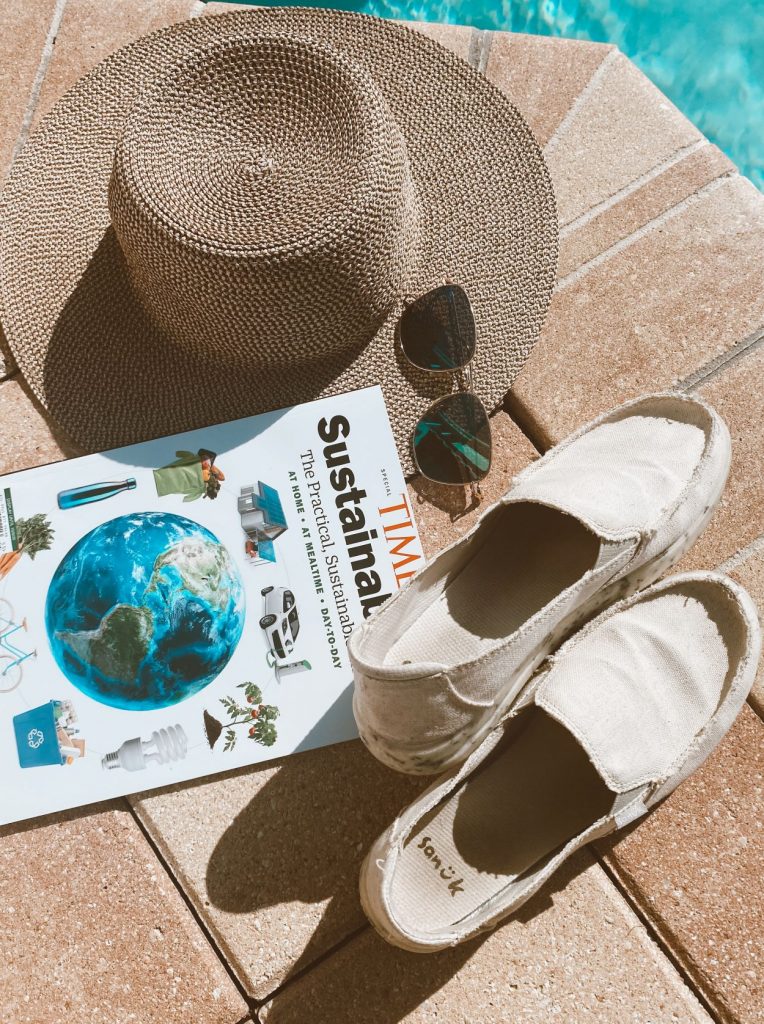Sustainability is Always in Style: Sanuk’s Sustainable Commitment – Sanuk®
By Hannah Knighton – Marine Biologist, Science Journalist
As the world works toward a more sustainable future, consumers are becoming increasingly educated about the environmental impact of their choices. Many of us want to shop responsibly, so are seeking more sustainable options.
And while you might find some brands and corporations turning a blind eye, Sanuk — and parent company, Deckers Brands — is looking directly at finding solutions.
Let’s take a peek behind the scenes into the world of Sanuk and what it means for a brand to take responsibility for its impact on people and the environment though reducing waste, water use, emissions, and carbon footprint.
Cutting Back for Climate Change
Contributing to about 10% of global greenhouse gas emissions, the most important thing the fashion industry can do is reduce its impact.
Sanuk and Deckers Brands are taking on reducing energy consumption throughout the entire supply chain. That means looking for ways to cut back in everything from production facilities to corporate headquarters.
“We want to know what our footprint is and challenge ourselves to reduce wherever possible,” says Brooke Beshai, Director of Sustainability and Compliance for Deckers Brands.
For starters, Deckers corporate headquarters located in Goleta, California is a LEED certified building with over 1,100 solar panels used to offset electricity use. One of the company’s major distribution centers in California is set to be a zero-waste facility.
Further down the supply chain in production facilities, the focus is largely on reducing waste and water usage. The fashion industry uses a lot of freshwater, something that’s not replaceable or substitutable. That’s why water usage is reduced in Sanuk and Deckers facilities through mitigation and purification programs.
When it comes to waste management, the goal is to produce less and avoid landfills through recycling and repurposing waste materials. Repurposed waste can be made into things like playgrounds or asphalt, but there’s also the opportunity to create something that’s even more valuable than the materials’ original use, otherwise known as upcycling.
Sanuk recognizes the importance and value of upcycling and recycling measures and has teamed up with interesting partners for sourcing upcycled materials. REPREVE is a company that turns plastic water bottles into fibers, similar to thread, that can be used to make clothes and shoes. Through this process, over 25 million plastic water bottles have been repurposed.
There’s also BLUMAKA, who repurposes waste foam into new midsoles and insoles for shoes, instead of that scrap being sent to the landfill. You can see Sanuk repping Blumaka’s technology in the SustainaSole, a shoe that’s composed of at least 55% recycled material by weight.
Materials Matter
The best way to know if a brand is really toting sustainable materials is if they clearly know what their products are made of and exactly where the materials came from. Sanuk can tell you exactly what’s in their shoes; sustainably sourced hemp and cotton that make for FULLY VEGAN PRODUCTS and RESPONSIBILITY SOURCED LEATHER when they do use it.
You’ll also find hemp being used in Sanuk’s products. Hemp is an eco-friendly fiber, the cousin of cannabis. Hemp goes easy on the Earth, requiring less water and no pesticides compared to cotton. Since switching to more hemp, the savings have been enormous: 137 million gallons of water and 82,000 lbs of carbon. Picture 137 million milk jugs and imagine the weight of a fully loaded 18-wheeler truck, that’s the amount of savings that can come with using hemp.
However, not all raw-materials are created equal. Director of Sustainability, Brooke Beshai, explains that there may be tradeoffs. When it comes to bio-based materials, CO2 and energy is reduced but water usage is increased. “We are constantly evaluating our materials and their environmental impacts so we can guide our brands to make better, more preferred selections,” Beshai said.
Sustainability is Always in Style
We’re only skimming the surface of Sanuk’s sustainable practices. Sanuk and Deckers Brands as a whole hold themselves accountable to all these sustainable goals and more through a Corporate Responsibility Program. Partnered with the United Nations Global Compact (UNGC), a corporate sustainability initiative, Sanuk shows their commitment to conducting business at the highest standards for human rights, environmental practices, and labor standards.
“While we each have an obligation to help mitigate the effects of climate change, [Deckers] believes we can use our scale, along with others in our industry, to fight climate change,” Beshai said.
Always looking for ways to refine and improve policies and procedures, this is a company that will remain proactive about their sustainability goals. You can always learn more about Deckers’ sustainability efforts through Sanuk’s most recent CORPORATE RESPONSIBILITY REPORT.
Fashion seems like a small choice when we’re clicking “add to cart” online, but it has a huge impact. Trends come and go but our planet is forever, that’s why Sanuk is committed to making sustainability a trend that won’t go out of style.

